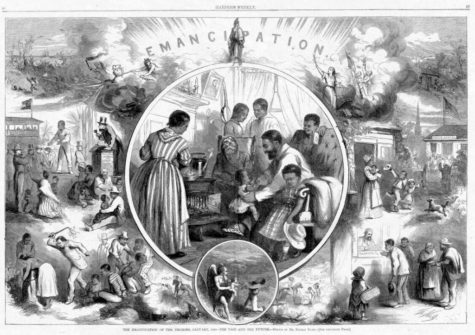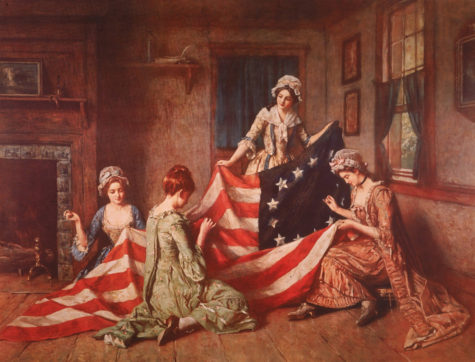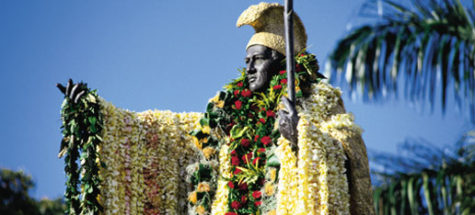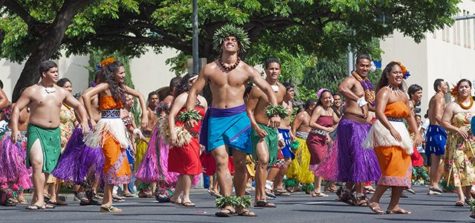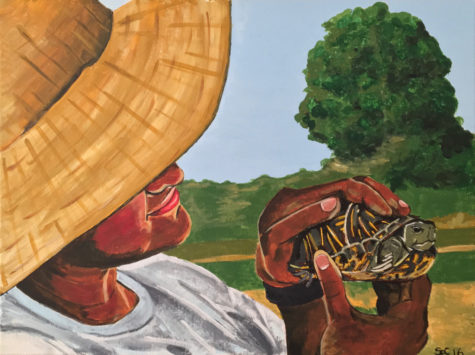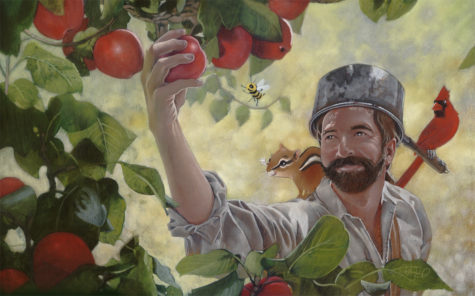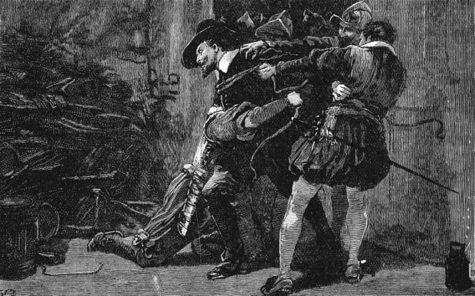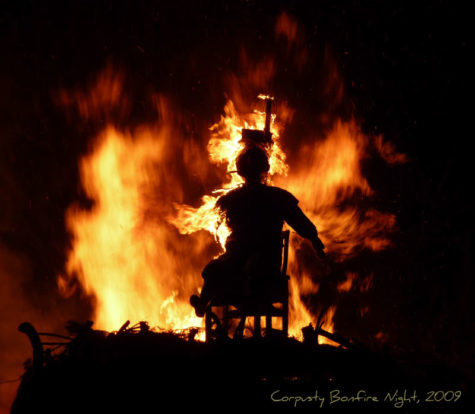Secular
July 1st is Canada Day, a holiday that marks Canada’s independence from Great Britain which took place in 1982.
There is no standard mode of celebration for Canada Day; Jennifer Welsh, a professor of International Relations at the University of Oxford, said about this: “Canada Day, like the country, is endlessly decentralized. There doesn’t seem to be a central recipe for how to celebrate it—chalk it up to the nature of the federation.
Most communities across the country will host organized celebrations for Canada Day, typically outdoor public events, such as parades, carnivals, festivals, barbecues, air and maritime shows, fireworks, and free musical concerts, as well as citizenship ceremonies.
However, the locus of the celebrations is the national capital, Ottawa, Ontario, where large concerts and cultural displays are held on Parliament Hill, with the governor general and prime minister typically officiating, though the monarch or another member of the Royal Family may also attend or take the governor general’s place.
Source: Wikipedia
Emancipation Day, also called Juneteenth, celebrates the end of slavery and freedom on June 19, 1865 in eastern Texas and portions of the surrounding states. On that day, General Gordon Granger landed with Federal troops in Galveston, Texas, with the intention of enforcing President Abraham Lincoln’s Emancipation Proclamation of January 1, 1863.
The end of slavery was a gradual process, occurring as news of the proclamation reached outlying towns and states. Juneteenth was probably a shortened version of June 19th. A proclamation from the president stated that all slaves were now free, and the relationship between master and slave was now employer and employee:
“The freedmen are advised to remain quietly at their present homes and work for wages. They are informed that they will not be allowed to collect at military posts and that they will not be supported in idleness either there or elsewhere.”
Beginning the year following this Texas event, 1866, large celebrations to rival the Fourth of July began, including prayer services, inspirational speakers, reading of the Emancipation Proclamation, storytelling by former slaves, and traditional food and games. Soon neighboring states such as Louisiana, Arkansas, and Oklahoma were adding celebrations. Throughout Texas, ex-slaves purchased land for their Juneteenth gatherings.
June 19 was declared a legal holiday in Texas in 1980.
Whatever your ethnicity, it is always good to recognize that you have freedom – or if not, Juneteenth reminds you to work hard at obtaining it. If there are bonds tying you down, such as debt, addictions, or unwanted relationships, create a list that marks out a strategy that leads toward freedom.
Celebrating the Day:
- Wear white on Juneteenth – it is the color of spiritual strength.
- Fire is important.
- For dinner have a barbecue featuring your favorite foods.
- Be sure to include some tasty roasted tubers and root veggies like sweet potato and sweet onion.
- Have an extravagant soft drink. It is the tradition to have strawberry soda, but sparkling cranberry juice or berry flavored mineral water will do as well.
As the coals of the fire turn white with heat and the sun settles in the west it is time to turn to ritual. It is appropriate to purge things holding you down. Burn old unnecessary papers. Set yourself free from the past by clearing clutter. You’d be surprised how much this improves your mental health!
Sources: Almanac.com and Four Seasons of Mojo
What we know fondly as the “Stars and Stripes” was adopted by the Continental Congress as the official American flag on June 14, 1777, in the midst of the Revolutionary War.
Colonial troops fought under many different flags with various symbols and slogans–rattlesnakes, pine trees, and eagles; “Don’t Tread on Me,” “Liberty or Death,” and “Conquer or Die,” to name a few. The first flag had 13 stars on a blue field and 13 alternating red and white stripes for the 13 original colonies. Now there are 50 stars, one for each state in the Union, but the 13 stripes remain.
Although many people believe that Betsy Ross designed and sewed the first flag, there is no proof of that. Flag Day was first celebrated in 1877, on the flag’s 100th birthday.
From: Almanac.com
Hawaii is the only American state that was once a kingdom with its own monarchy. One of the greatest kings was King Kamehameha I, also called, appropriately, Kamehameha the Great. His name means “the very lonely one” or “the one set apart.” A statue of him can be found in the National Statuary Hall in the U.S. Capitol building in Washington, D.C.
King Kamehameha I probably was born some time around 1758, the year when Halley’s comet became visible over Hawaii. A courageous warrior, the king conquered and united the entire Hawaiian islands into one kingdom. During his reign, which lasted from 1782 to 1819, Hawaii became an important center in the fur and sandalwood trades.
The last king in the Kamehameha dynasty was King Kamehameha V, who ruled from 1863 to 1872. During this time, the king proclaimed June 11 as a day to honor his grandfather, King Kamehameha I.
The most important ritual of the celebration dates back to 1901 after the Territory of Hawaii was established. It is the afternoon draping ceremony in which the Kamehameha Statue in front of Aliʻiolani Hale and ʻIolani Palace on King Street in downtown Honolulu is draped in long strands of lei. The same is done at the Kamehameha Statue on the former monarch’s home island, the Big Island of Hawaii. Outside of the state, a similar draping ceremony is held at the United States Capitol where the Kamehameha Statue there is also draped in lei in the company of federal officials.
Late 19th century celebrations of Kamehameha Day featured carnivals and fairs, foot races, horse races and velocipede races. Today, Kamehameha Day is treated with elaborate events harkening back to ancient Hawaii, respecting the cultural traditions that Kamehameha defended as his society was slowly shifting towards European trends.
The King Kamehameha Hula Competition attracts hula groups from all over the world to the Neil S. Blaisdell Center for the two-day event. Prizes are awarded on the second night.
A floral parade is held annually at various locations throughout the state of Hawaii. On the island of Oahu, the parade runs from ʻIolani Palace in downtown Honolulu past Honolulu Harbor and the Prince Kūhiō Federal Building through Kakaʻako, Ala Moana and Waikīkī, ending at Kapiʻolani Park.
June 11 is also the anniversary of the dedication of Kapiʻolani Park. The floral parade features local marching bands—including the Royal Hawaiian Band (the oldest municipal band in the United States)—and artistically designed floats using native flowers and plants. Many local companies enter floats for their employees.
A favorite floral parade feature is the traditional royal paʻu riders. They represent a royal court led by a queen on horseback, followed by princesses representing the eight major islands of Hawaii and Molokini. Each princess is attended by paʻu ladies in waiting. Paʻu women are dressed in colorful and elegant 19th century riding gowns accented with lei and other floral arrangements.
After the parade, the state celebrates a Hoʻolauleʻa, literally celebration, or block party with food and music. Cultural exhibitions are also scattered throughout Kapiʻolani Park—arts and crafts, games, sports, and other events planned by the Bishop Museum, the premier Hawaiian cultural institution.
On the Island of Hawaii, there are three floral parades held. One between the towns of Hawi and Kapaʻau and one in the town of Hilo. There is a King Kamehameha Day Celebration Parade and Ho`olaule`a in Kailua Kona on Ali`i Drive each year. There is also a lei draping ceremony in Kapaau at the statue of King Kamehameha there.
Sources: Almanac.com and Wikipedia
We hear in them about parables of being slow and plodding, steady and methodical, and occasionally obsessed with Ninjitsu, news reporters, and pizza. We are, of course, talking about Turtles! Turtles are a type of reptile that exists in many environments through the word and have found their way into literature, poetry, and parable throughout the world’s history.
The first thing to know is that even though Turtles and Tortoises are not the same thing, this day is dedicated to celebrating and protecting both. World Turtle Day, May 23, is sponsored yearly by the American Tortoise Rescue (ATR) since 2000. This annually celebrated day shines a spotlight on care, conservation and awareness of the oldest living reptiles in the world, and celebrates these noble reptiles and their place in the world. The idea is to bring attention to, and increase knowledge of and respect for, turtles and tortoises, and encourage human action to help both the common box turtle, and the ever endangered sea turtle to survive and thrive.
Turtles and Tortoises
The two are often confused. Generally, turtles live and swim in the sea while tortoises are land-based. However, scientifically, “turtle” is used to describe any member of the order Testudine, which includes both turtles and tortoises!
There are seven species of sea turtles, of which the last four are classified as endangered or critically endangered:
- Flatback sea turtle (Natator depressus)
- Olive ridley sea turtle (Lepidochelys olivacea)
- Leatherback sea turtle (Dermochelys coriacea)
- Green sea turtle (Chelonia mydas)
- Loggerhead sea turtle (Caretta caretta)
- Kemp’s ridley sea turtle (Lepidochelys kempii)
- Hawksbill sea turtle (Eretmochelys imbricata)
Turtles can be found in most of the world’s oceans, with the exception of the Arctic and Antarctic. As adults, these omnivores can measure up to between 0.61 meters and 2.7 meters (2-9 feet) in length and can weigh up to 680 kilograms (1,500 pounds). All have a carapace (hard shell) except the leatherback, which has bony plates underneath leathery skin.
There are many species of tortoise, including the now-extinct Abaco tortoise (Chelonoidis albuyorum) and the saddle-backed Rodrigues giant tortoise (Cylindraspis vosmaeri). Most species of tortoise are herbivorous, with a few exceptions eating worms and insects.
Tortoises have the longest lifespans of any animal. In fact, the oldest ever tortoise (named Tu’i Malila) recorded was given to the Tongan family in 1777 by British explorer Captain Cook and lived to a grand old age of 188.
Giant tortoises move at a very leisurely pace of 0.27 kilometers per hour (0.17 miles per hour). Although tortoises are known for giving rise to the saying “slow and steady wins the race” from the Aesop fable The Hare and the Tortoise, the fastest recorded speed of a tortoise on land is a relatively zippy 8 kilometers per hour (5 miles per hour)!
In the wild, both tortoises and turtles are at risk from illegal hunting and poaching, oil spills, artificial light from coastal cities, and non-recyclable waste. As pets, these long-living reptiles can suffer greatly from improper care and handling.
Even if you like your reptiles fighting villains in the mean streets of New York City, carrying the four elephants of the Discworld through space or kidnapping Princess Peach, we can all do our part to ensure these majestic creatures are preserved, whether as pets or in the wild.
How to celebrate Turtle Day
World Turtle Day is celebrated around the globe in a variety of ways, from dressing up as turtles or wearing green summer dresses, to saving turtles caught on highways, to research activities.
- Note: If a tortoise is crossing a busy street, pick it up and send it in the same direction it was going – if you try to make it go back, it will turn right around again.
Contact American Tortoise Rescue on Facebook, or visit their website, and find out what you can do in your area to help promote the protection of turtles. If there’s no activities in your area, work with them to find out what you can do to coordinate with local aquariums, pet stores, and nature groups to focus on the species of this reptile that live in your area.
Other things you can do include the following:
- Never buy a turtle or tortoise from a pet shop as it increases demand from the wild.
- Report the sale of any turtle or tortoise of any kind less than four inches. This is illegal throughout the U.S.
- Report cruelty or the illegal sales of turtles and tortoises to your local animal control shelter.
- Never remove turtles or tortoises from the wild unless they are sick or injured.
- Write letters to legislators asking them to keep sensitive habitat preserved or closed to off road vehicles, and to prevent off shore drilling that can lead to more endangered sea turtle deaths.
History of Turtle Day
First created in 1990 by the American Tortoise Rescue, World Turtle day recognizes that some species of our hard (and soft!) shelled friends are suffering, almost on the edge of extinction due to environmental hazards and issues with hunting and harvesting of their eggs.
American Tortoise Rescue was created by Susan Tellem and Mashall Thompson, a married pair of animal activists who had a particular passion for tortoises. We all have to have something that drives us in this life, and for these two it was bonding over animal right’s activist work. Don’t think these two are just closet hippies with an overwhelming adoration for all things shelled and scaly. Susan is deeply involved with television arts & sciences and the public relations society of America while being a partner in Tellem Grody Public Relations Incorporated. They organize charity collections and works around the world to help protect these amazing critters, and created Turtle Day to get everyone involved and spread awareness of the shrinking habitat and declining numbers of these sensitive creatures.
Celebrating John Chapman, legendary American pioneer and folk hero who planted apple trees across the American Frontier. Chapman was born in Massachusetts, September 26, 1774, but Johnny Appleseed Day is celebrated on March 11th.
Chapman earned his nickname because he planted small orchards and individual apple trees during his travels as he walked across 100,000 square miles of Midwestern wilderness and prairie. He was a genuine and dedicated professional nurseryman, known for his generous nature, his love of the wilderness, his devotion to the Bible, his knowledge of medicinal herbs, his harmony with the Indians, and his eccentric nature, too.
Celebrate this holiday by doing something with apples. Decorate with images of apples, apple trees, and Johnny Appleseed himself. You might visit an orchard to pick apples, hold a pot luck feast with apple smoked pork and apple pie. You might even want to plant an apple tree in your yard.
Here is a blessing you can use:
Apples are sacred
As everyone must know.
We remember Johnny
Wherever apples grow.
So we say a blessing
Wherever they may be
Blessing on the apples
And Blessing on each tree.
~Elizabeth Barrette
About Johnny Appleseed
While the legend depicts Johnny Appleseed as a barefoot vagrant, cooking pot on his head, and roaming the landscape strewing apple seeds randomly, it is far more likely that he was more of an eccentric but skilled professional, establishing nurseries of apple trees, and selling his services progressively westward to landowners interested in planning orchards. He’d teach his clients how to establish an orchard, how to keep deer and livestock at bay, and once the nursery was thriving, he’d move on to the next person interested in planting orchards.
If he had to stay in one place for any length of time, he’d erect a teepee like structure and live humbly on the bare ground. It is said that his only possessions were the clothes on his back, a bowl and a spoon, and a cooking pot for his gruel.
He was a follower of Swedenborg and devoutly believed that the more he endured in this world the less he would have to suffer and the greater would be his happiness hereafter—he submitted to every privation with cheerfulness and content, believing that in so doing he was securing snug quarters hereafter.
In the most inclement weather he might be seen barefooted and almost naked except when he chanced to pick up articles of old clothing. Notwithstanding the privations and exposure he endured, he lived to an extreme old age, not less than 80 years at the time of his death—though no person would have judged from his appearance that he was 60. He always carried with him some work on the doctrines of Swedenborg with which he was perfectly familiar, and would readily converse and argue on his tenets, using much shrewdness and penetration.
Next time you bite into an apple, think of “Johnny Appleseed.”
From Almanac.com
- Presiding Goddess: Nokomis
- Themes: Prosperity, Luck, Providence
- Symbols: Gold, Golden items, Corn
About Nokomis: In Algonquin tradition, Nokomis is the “grandmother” who supplies us with the earth’s riches and gives nourishment to humankind in times of need. When people are hungry, Nokomis provides food. When there is no food to be found, she offers to let us consume her spirit, thereby continuing the cycle of life.
To do Today: Today marks the anniversary of the discovery of gold in California and the resulting expansion westward in the United States. In keeping with this prosperous, fortunate theme, wear or carry something gold today to bring a little more of Nokomis’s abundance your way.
For financial improvements, especially if you have any pressing bills, eat corn (any type) today. Before consuming it pray to Nokomis, saying:
“Grandmother, see the sincerity of my need.
Go to your storehouse and dispense _____
(fill in the minimum amount you need to get by)
so that I might meet my obligations.”
Eating the corn internalizes the energy of the prayer so opportunities to make money start manifesting.
If you’re pressed for time, grab a kernel of unpopped popcorn and put it in your wallet or purse to keep Nokomis’s prosperity (and your cash) where it’s needed most.
The History:
In January of 1848, James Marshall had a work crew camped on the American River at Coloma near Sacramento. The crew was building a saw mill for John Sutter. On the cold, clear morning of January 24, Marshall found a few tiny gold nuggets. Thus began one of the largest human migrations in history as a half-million people from around the world descended upon California in search of instant wealth.
From: 365 Goddess and other sources
Originally Armistice Day, commemorating the signing of the agreement that ended World War I at 11:00 A.M., November 11, 1918. An act approved May 13, 1938 made November 11 a legal Federal holiday, “dedicated to the cause of world peace and to be hereafter celebrated and known as ‘Armistice Day.’”
This federal holiday was changed to Veterans Day in 1954. At that time, it became a day to honor all the men and women who have served in the armed forces of the United States. Each year, special ceremonies are held at Arlington National Cemetery in Virginia.
An official wreath-laying ceremony is held each Veterans Day at the Tomb of the Unknown Soldier in Arlington National Cemetery, while parades and other celebrations are held in states around the country.
Veterans Day is not to be confused with Memorial Day—a common misunderstanding, according to the U.S. Department of Veterans Affairs. Memorial Day (the fourth Monday in May) honors American service members who died in service to their country or as a result of injuries incurred during battle, while Veterans Day pays tribute to all American veterans—living or dead—but especially gives thanks to living veterans who served their country honorably during war or peacetime.
Consider spending some time on-line learning more about our nation’s veterans.
- The Great War Society has developed a Web site devoted to World War I educational materials.
- The World War II Memorial celebrates the victory of “the greatest generation” with a design that uses moving water to harmonize with its natural surroundings.
- Visit the Korean War Veterans Memorial online; this moving memorial, dedicated in 1995, is the latest addition to the National Mall in Washington, D.C.
- See a registry of all the names on the Vietnam Veterans Memorial Wall in Washington. Learn more about the military men and women who are on duty today.
Source: Almanac.com
In Great Britain, Bonfire Night is associated with the tradition of celebrating the failure of Guy Fawkes’ actions on 5 November 1605. The British festival is, therefore, on 5 November, although some commercially driven events are held at a weekend near to the correct date, to maximize attendance.
Also known as:
- Bonfire Night
- Guy Fawkes Day
- Firework Night
Bonfire night’s sectarian significance has generally been lost: it is now usually just a night of revelry with a bonfire and fireworks, although an effigy of Guy Fawkes is burned on the fire. Celebrations are held throughout Great Britain; in some non-Catholic communities in Northern Ireland; and in some other parts of the Commonwealth. In the Canadian province of Newfoundland and Labrador, 5 November is commemorated with bonfires and firework displays, and it is officially celebrated in South Africa.
There are many food items that are associated with Bonfire Night. Toffee apples, treacle toffee, black peas and parkin, and even the jacket potato, are traditionally eaten around Bonfire Night in parts of England.
This Day in History
The history of this annual commemoration begins with the events of 5 November 1605, when Guy Fawkes, a member of the Gunpowder Plot, was arrested while guarding explosives the plotters had placed beneath the House of Lords. Celebrating the fact that King James I had survived the attempt on his life, people lit bonfires around London; and months later, the introduction of the Observance of 5th November Act enforced an annual public day of thanksgiving for the plot’s failure.
Within a few decades Gunpowder Treason Day, as it was known, became the predominant English state commemoration, but as it carried strong Protestant religious overtones it also became a focus for anti-Catholic sentiment. Puritans delivered sermons regarding the perceived dangers of popery, while during increasingly raucous celebrations common folk burnt effigies of popular hate-figures, such as the pope.
Towards the end of the 18th century reports appear of children begging for money with effigies of Guy Fawkes and 5 November gradually became known as Guy Fawkes Day. Towns such as Lewes and Guildford were in the 19th century scenes of increasingly violent class-based confrontations, fostering traditions those towns celebrate still, albeit peaceably.
In the 1850s changing attitudes resulted in the toning down of much of the day’s anti-Catholic rhetoric, and the Observance of 5th November Act was repealed in 1859. Eventually the violence was dealt with, and by the 20th century Guy Fawkes Day had become an enjoyable social commemoration, although lacking much of its original focus. The present-day Guy Fawkes Night is usually celebrated at large organised events, centered on a bonfire and extravagant firework displays.
Settlers exported Guy Fawkes Night to overseas colonies, including some in North America, where it was known as Pope Day. Those festivities died out with the onset of the American Revolution. Claims that Guy Fawkes Night was a Protestant replacement for older customs like Samhain are disputed, although another old celebration, Halloween, has lately increased in popularity, and according to some writers, may threaten the continued observance of 5 November.
One notable aspect of the Victorians’ commemoration of Guy Fawkes Night was its move away from the centers of communities, to their margins. Gathering wood for the bonfire increasingly became the province of working-class children, who solicited combustible materials, money, food and drink from wealthier neighbors, often with the aid of songs. Most opened with the familiar “Remember, remember, the fifth of November, Gunpowder Treason and Plot”.
The earliest recorded rhyme, from 1742, is reproduced below along with one bearing similarities to most Guy Fawkes Night ditties, recorded in 1903 at Charlton on Otmoor:
Don’t you Remember,
The Fifth of November,
‘Twas Gunpowder Treason Day,
I let off my gun,
And made’em all run.
And Stole all their Bonfire away.
~1742
The fifth of November, since I can remember,
Was Guy Faux, Poke him in the eye,
Shove him up the chimney-pot, and there let him die.
A stick and a stake, for King George’s sake,
If you don’t give me one, I’ll take two,
The better for me, and the worse for you,
Ricket-a-racket your hedges shall go.
~1903
Sources:
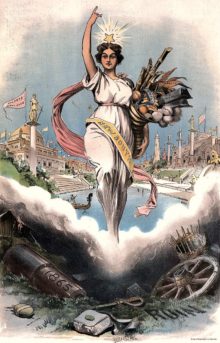 Commemorates the storming of the Bastille, which started the French Revolution, on July 14th, 1789. Bastille Day is also celebrated by many of France’s former and current colonies.
Commemorates the storming of the Bastille, which started the French Revolution, on July 14th, 1789. Bastille Day is also celebrated by many of France’s former and current colonies.
For A Magickal Bastille Day
- Theme: It’s time for a revolution!
- Colors: Blue, white, and red
- Symbols: The Eiffel Tower and the French national flag
- Presiding Goddess: Lady Liberty
About Lady Liberty:
Although, Lady Liberty is not a goddess in the true sense of the word, she is a potent symbol of freedom. The statue of Liberty was a gift to the United States from the people of France. The statue is of a robed female figure representing Libertas, the Roman goddess of freedom, who bears a torch and a tabula ansata (a tablet evoking the law) upon which is inscribed the date of the American Declaration of Independence, July 4, 1776. A broken chain lies at her feet. The statue is an icon of freedom. In 1793, during the French Revolution, the Notre Dame de Paris cathedral was turned into a “Cult of Reason” and for a time “Lady Liberty” replaced the Virgin Mary on several altars.
To do today:
Time to take stock of your life and circumstances. Is it time for a revolution in your life? Is it time to break down barriers, make new rules, give yourself permission to be free of oppressive situations and/or relationships? Is it time to draw up your own Declaration of Independence, or as the French termed it, the Declaration of the Rights of Man and of the Citizen?
Here is a spell for personal freedom:
This spell taps directly into the energy and power of Bastille Day, and can be performed any time it is needed. You will need a length of blue, white, and red ribbon or yarn. It should be as long as you are tall. You can use three ribbons, each a solid color, or one ribbon that is a combination of the three colors. You will also need an envelope, and a handful of dandelion fluff, or feathers, a small candle, and a knife or pair of scissors.
Light the candle, and then place the dandelion fluff into the envelope, and seal it shut. Those little bits of fluff or feathers represent your spirit. The envelope represents the walls you have created to protect yourself. Carefully fold or roll the envelope up so that will fit comfortably in your hand. You control your own destiny. It lies in your hands now.
Sit down, holding the envelope, and think about what restricts your freedom, what circumstances and situations starve your spirit, and steal your joy, what binds you, what constricts you, what holds you back. Begin to tie the ribbon around the envelope. There is no wrong way to bind up the envelope with the ribbon. Tie as many knots as you’d like. While you are binding the envelope, be thinking about the restrictions that bind your spirit. When you are complete, drip candle wax onto the bundle to seal it, and then snuff the candle.
Now, take the wrapped up envelope outside, along with the knife or scissors outside. Take a few moments to breathe in the outside air, listen to the sounds around you, notice the wind and the sky. You can be free. You can claim your freedom. Allow yourself to think about how it will feel to be free. When you are ready, begin to cut the strands of ribbon away from the envelope. As you do, say the following:
Bondage has no hold on me.
Beautiful Lady set me free.
When the ribbon is completely cut, very gently open the envelope and take out the dandelion fluff or feathers. Holding them in your hand, gently breathe into them and then hold them high and toss them free. Don’t worry if they simply fall to the ground. Any feathers or fluff that fails to fly free can be picked up and gently placed in an open spot where they will catch the breeze.
Burn or bury the remains of the envelope and the ribbon. When you go back inside, re-light your candle. You are now ready to let your own light shine. Allow the candle to burn completely.
About Bastille Day:
What follows is an excerpt from a Paris newspaper account of the fall of the Bastille, on July 14, 1789:.
It was a terrible scene. . . . The fighting grew steadily more intense; the citizens had become hardened to the fire; from all directions they clambered onto the roofs or broke into the rooms; as soon as an enemy appeared among the turrets on the tower, he was fixed in the sights of a hundred guns and mown down in an instant;
meanwhile cannon fire was hurriedly directed against the second drawbridge, which it pierced, breaking the chains; in vain did the cannon on the tower reply, for most people were sheltered from it; the fury was at its height; people bravely faced death and every danger; women, in their eagerness, helped us to the utmost; even the children, after the discharge of fire from the fortress, ran her and there picking up the bullets and shot;
…and so the Bastille fell and the governor, De Launey, was captured … Serene and blessed liberty, for the first time, has at last been introduced into this abode of horrors, this frightful refuge of monstrous despotism and its crimes.
Interestingly, although the name of the Bastille evokes dark images of despotism and unjust imprisonment, in reality it was a great deal pleasanter than most ordinary prisons. A central part of the myth, and an indication of its potency, was the story of a prisoner supposedly forced to wear an iron mask to conceal his identity even from his guards – the sufferings of this Man in the Iron Mask were given wide publicity by Voltaire. Archives of the title reveal that there was indeed a masked prisoner from 1698 until 1703, when he died. The mask was made of velvet, and he was well treated.
It was originally built in the 14th century to guard one of main entrances to Paris, but by the 18th century the Bastille served only as a prison – mainly for political, aristocratic prisoners who could not be thrust into the crowded gaols with common criminals – and occasionally as a store for arms.The fortress also accommodated printers, booksellers and authors who produced works that the authorities considered seditious. Voltaire was imprisoned there twice: first in 1717 when he was suspected of writing verses accusing the Régent of incest, and then again in 1726. Throughout the 18th century there were never more than 40 inmates, most of them serving short sentences.
On the morning of 14 July 1789, the Bastille was nearly empty of prisoners, housing only seven old men annoyed by all the disturbance: four forgers, two “lunatics” and one “deviant” aristocrat, the Comte de Solages (the Marquis de Sade had been transferred out ten days earlier). The cost of maintaining a medieval fortress and garrison for so limited a purpose had led to a decision being taken to close it, shortly before the disturbances began. It was, however, a symbol of royal tyranny.
Upon learning that the Bastille had been taken, King Louis XVI, who was residing at Versailles, was reported to have asked an informer: “Is this a revolt?” and La Rochefoucauld-Liancourt said, “No, Sire, it is a revolution.” Little did Louis know that the mob’s next plan was to march to Versailles, and take him away with them as well.
Note: This post was put together by Shirley Twofeathers you may repost and share it only if you give me credit and a link back to this website. Blessed be.

